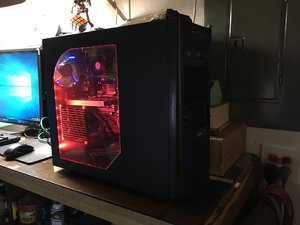ManofGod
[H]F Junkie
- Joined
- Oct 4, 2007
- Messages
- 12,864
I obtained a Gateway Computer with an i5-2500k and 12GB of ram for a friend a while back. I installed the upgrade of Windows 10 Home on it and it worked quite well. The problem was, I had installed an AMD HD6770 which is considered a legacy device.
Because of that HD 6770, the last two feature updates did not go well at all or did not install at all. Therefore, I installed a clean install of Windows 7 HP, installed SP1 and started the updates process. (I also installed the 15.7.1 Legacy driver.) This should keep his system from having problems and is a good reason to stay or install Windows 7. Just wanted him to be able to play his Final Fantasy XIV and some steam games without worrying about the future updates.
If he had a more recent card, it would have not been an issue but, that is ok, I am just happy to get him up and running again.
Because of that HD 6770, the last two feature updates did not go well at all or did not install at all. Therefore, I installed a clean install of Windows 7 HP, installed SP1 and started the updates process. (I also installed the 15.7.1 Legacy driver.) This should keep his system from having problems and is a good reason to stay or install Windows 7. Just wanted him to be able to play his Final Fantasy XIV and some steam games without worrying about the future updates.
If he had a more recent card, it would have not been an issue but, that is ok, I am just happy to get him up and running again.
![[H]ard|Forum](/styles/hardforum/xenforo/logo_dark.png)
